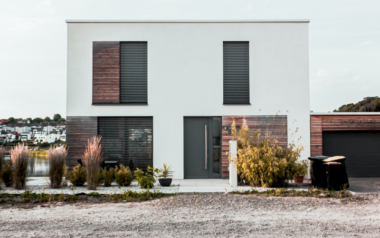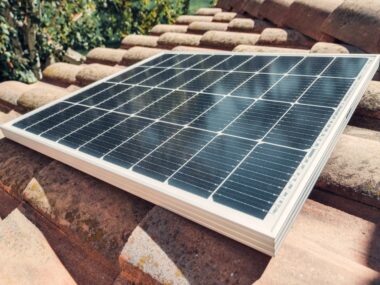Extreme weather events caused by climate change have been increasing in the last few years and with that so has our energy usage. By 2100 electricity demand for heating and cooling is expected to increase by 0.4-4.2% in Canada as a direct result of climate change. As we use more heat in winter and more cooling in summer, the energy efficiency of our homes is becoming more important than ever. And not just for our wallets, even though rising energy prices continue to squeeze our monthly budgets, but for the planet too. Air conditioners use the most energy out of any household appliance and leak enormous amounts of greenhouse gas emissions into the atmosphere. So how do we make our homes more energy efficient and eco-friendly and cover the cost to do so? We breakdown Canada’s green home incentives, covering programs that aim to make energy efficiency more affordable and accessible to a larger portion of the population.
Canada’s Energy Ratings
Before we get into how to make your home more efficient, let’s go over how energy efficiency is measured in Canada first.
EnerGuide
EnerGuide is Canada’s energy performance rating and labeling program. You’ll find EnerGuide ratings on houses, vehicles and some products. An EnerGuide rating for your home tells you where you consume the most energy and your impact on the environment. It can be a useful tool when shopping for a new home or when you’re looking to upgrade the energy efficiency of your current home.
ENERGY STAR
An internationally recognised label, ENERGY STAR symbols mark a high energy efficiency product, home, or workplace. ENERGY STAR certified new homes have features like energy-efficient windows and ENERGY STAR certified lighting or appliances and are on average 20% more energy efficient on space and water heating.
1. The Greener Homes Grant
The Greener Homes Grant covers a portion of the cost, up to $5,000, to retrofit your home with an energy saving upgrade (e.g. solar panels, windows and doors, thermostat and space and water heating). You can also get up to $600 towards required pre and post retrofit evaluations. This green home incentive can be combined with provincial programs in some provinces, increasing the grant limit.
Qualifying Conditions
- The home is your primary residence
- Retrofit is not started before EnerGuide pre-evaluation
- Home is older than 6 months old
The Application Process
The application process is different depending on where you live. Ontario, Quebec and Nova Scotia have additional provincial programs and each have their own application process. In general though the process follows the following steps:
- Step 1: Register for the program online
- Step 2: Schedule a pre-retrofit EnerGuide evaluation and receive a Renovation Upgrade Report (RUR)
- Step 3: Retrofit your home according to the RUR
- Step 4: Get a post-retrofit Energuide evaluation
- Step 5: Receive your Greener Homes Grant
Depending on what upgrades you’re looking to make, you might also want to apply for the Greener Homes Loan to cover more of the costs.
2. The Greener Home Loan
The Greener Home Loan provides up to $40,000 towards the cost of upgrades recommended under your Energuide evaluation and that are eligible for the Greener Home Grant. Unlike the Greener Homes Grant you can draw down a portion of the loan before work begins on your home to pay contractor down-payments. The Greener Homes Loan is interest-free and can be paid back over ten years.
Qualifying Conditions
- The home is your primary residence
- You’ve completed a pre-retrofit evaluation since April 1, 2020, or later
- You have a good credit history and aren’t under:
- a consumer proposal
- an orderly payment of debt program
- a bankruptcy or equivalent insolvency proceeding
The Application Process
- Step 1: Apply for the Greener Homes Grant
- Step 2: Get a pre-retrofit Energuide evaluation
- Step 3: Decide which retrofits from the report you want to move forward with and get at least three quotes from contractors.
- Step 4: Submit your application online and activate your loan once approved. You can receive up to 15% of your loan in advance to pay for upfront costs like contractor down-payments.
- Step 5: Complete your retrofit, keeping all your receipts and invoices.
- Step 6: Get a post-retrofit Energuide evaluation.
- Step 7: Upload your receipts and receive your loan.
- Step 8: Repay your loan over ten years.
3. The Oil to Heat Pump Affordability Program
The Oil to Heat Affordability Program pays up to $10,000 to switch from oil heating to new, electric, cold climate air source heat pumps. In most cases, funds are paid upfront, once your application has been approved. Cold climate air source heat pumps run on electricity and use thermal energy to heat or cool your home. It’s estimated that making the switch from oil to cold-climate heat pumps can save between $1,500 and $4,700 per year on home energy bills.
Qualifying Conditions
- The home is your primary residence
- Home is currently heated by oil
- Proof of purchase of at least 1,000 litres of home heating oil in the past 12 months
- Your household is at or below the median household after-tax income
- Home is older than 6 months old and not off-grid
- You can complete work within 6 months of receiving funds
The Application Process
- Step 1: Get a quote for the work to upgrade your home from oil heating to a heat pump.
- Step 2: Log in to the Canada Greener Homes portal to apply. Residents living in Newfoundland and Labrador, Nova Scotia and Prince Edward Island apply through their provincial programs.
- Step 3: Accept your grant amount and receive a cheque within 5-10 business days.
- Step 4: Complete your upgrade within 6 months and submit your receipts. You’ll need to keep copies of your documents until March 31, 2028.
- Step 5: Some homeowners will be selected for a post-payment evaluation as the final step.
4. Home Efficiency Rebate Plus (ON)
Available In Ontario, the Home Efficiency Rebate Plus program provides up to $10,000 back for energy efficiency upgrades. The program is a partnership between Enbridge Gas and the Canada Greener Homes Grant to provide enhanced rebates towards retrofits like home insulation, windows and doors, and renewable energy systems.
Unlike the Canada Greener Homes Grant, Enbridge customers with tenants and off-grid community can qualify for the Home Efficiency Rebate Plus program.
The Application Process
- Step 1: Schedule a home energy assessment with a licensed Registered Energy Advisor.
- Step 2: Receive your custom report with recommended upgrades.
- Step 3: Complete at least one eligible home upgrade.
- Step 4: Schedule a follow-up home energy assessment.
- Step 5: Receive your rebate cheque.
5. Energy Saving Kits (BC)
British Columbia offers income qualifying residents simple energy savings kits to help save energy at home. While not the same as the other green home incentives, it’s still worth mentioning. You can apply for a kit every time you move home or once every five years. You don’t have to own your home to get a free kit, renters can apply too.
Included In The Kit
- Four LED light bulbs
- High-efficiency showerheads
- Water-saving tap aerators
- LED night light
- Fridge and freezer thermometer
- Weather stripping to reduce drafts around windows and doors
- Step-by-step instruction guide to help you install each product
The Application Process
- Step 1: Apply online with your BC Hydro or City of New Westminster utility account number. You can also order your kit over the phone.
- Step 2: Receive your energy saving kit within three to six weeks. The kit is entirely free of charge and won’t have shipping fees.
In Conclusion
In addition to green home incentives at the residential level, Canada introduced a new renewable energy investment tax credit (ITC) in 2023. This tax incentive provides a 30% write-off for renewable technology developers until 2034 aiming to position Canada as an attractive country for renewable energy projects.
In 2022, 70% of Canada’s electricity supply came from renewable sources but natural gas still powers over 50% of Canadian homes. While there are programs and green home incentives in place to make the transition, the pace of change appears slow with residential upgrades still out of financial reach for many.
Sustayn is designed to present the most useful recommendations for environmentally friendly approaches and items. While this article covers some of Canada’s green home incentives, it is not intended to be an exhaustive list. Other incentives and rebates are available. We update links when possible, but note that links can be broken and subject to change.








